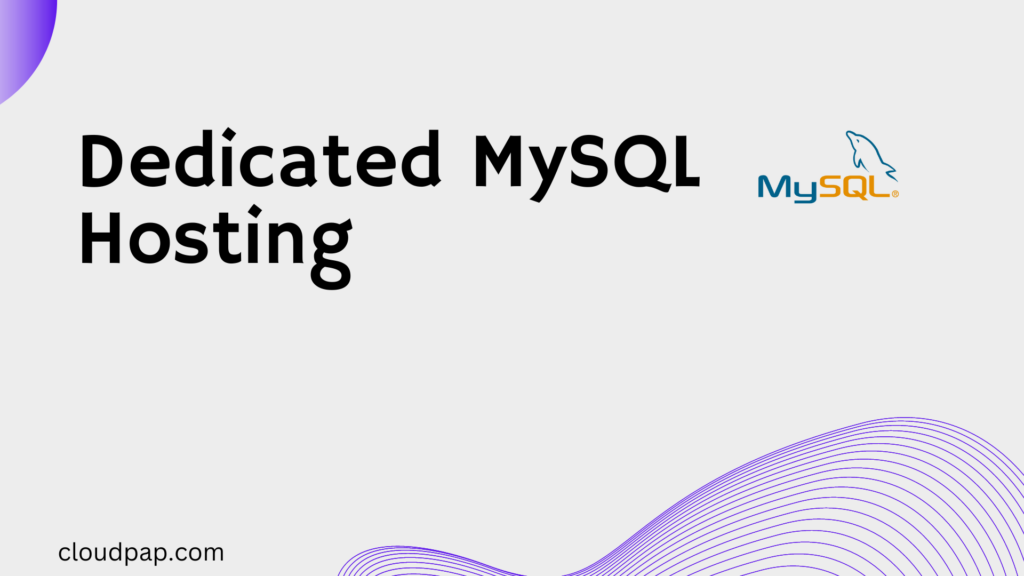Last updated on June 27th, 2024 at 07:31 am
Cloud computing has revolutionized the healthcare industry, transforming how providers manage patient data and medical records.
According to MarketsandMarkets’ prognosis, the market of cloud computing in the medical field will reach a staggering $18.6 billion by 2024.
This article explores various use cases for Cloud Computing for Healthcare Providers that can help simplify existing processes and improve patient care.
Cloud Computing Use Cases for Healthcare Providers
a. Electronic Health Record/Electronic Medical Record (EHR/EMR)
EHRs and EMRs provide a comprehensive record of the patient’s medical history, treatments, medications, insurance information, vital signs, laboratory results, radiology images, and more that is accessible by qualified healthcare professionals.
An EHR provides an individual patient’s lifetime clinical record across multiple healthcare settings, such as hospitals or outpatient clinics.
An EMR is often referred to as the same system but usually applies at a single medical practice or clinic level.
Both systems enable access to health information for improved decision-making between care providers and help track patient outcomes across time.
b. Telemedicine
Another way the healthcare sector is utilizing cloud computing is through telemedicine.
This is actually a form of healthcare delivery that uses digital communication technology to provide medical services remotely.
And it has become an increasingly popular option for healthcare providers as it allows them to reach more patients, reduce costs, and improve patient outcomes.
This technology can be used for diagnoses and treatments of various health conditions. It can also facilitate educational programs for medical professionals and patients alike.
With telemedicine, healthcare providers can communicate with their patients remotely using secure video or audio-conferencing platforms available through leading cloud-computing providers such as CloudPap, AWS, or Microsoft Azure.
c. Medical Imaging
Medical Imaging is a type of cloud computing technology used by healthcare providers to store and access patient data.
It is a digital form of X-ray imaging that allows the healthcare provider to view the inside of an organ or body part without having surgery.
Medical Imaging utilizes powerful software that electronically stores, retrieves, and displays medical images.
So, with such capabilities, medical professionals can obtain detailed pictures of organs and tissues within the body.
And helps doctors diagnose diseases, identify abnormalities in anatomy, and monitor how treatments affect patients over time.
d. Patient Engagement
Patient engagement is one of the most important use cases for cloud computing in healthcare.
Cloud-based patient portals allow the healthcare sector to share medical records with patients securely.
It also enables them to access their own health information, view test results, request appointments or prescription refills, and communicate directly with their care team.
This allows patients to remain engaged in their own care as they can easily access their health data on any device when it’s convenient for them.
These tools can help engage patients in preventative care by sending reminders about doctor visits or lab tests or providing educational materials promoting healthy lifestyle changes.
Cloud computing also facilitates the sharing of patient data across multiple healthcare organizations so that everyone involved in a person’s care has up-to-date information at all times.
e. Healthcare Analytics
What is healthcare analytics?
Well, it is the process of collecting, managing, analyzing, and interpreting large amounts of health-related data in order to gain insights about a particular patient or population.
Analytics is an important tool for healthcare providers to understand and analyze critical data, such as patient information and health outcomes.
With the increasing complexity of healthcare systems, data analytics can help identify potential risks and opportunities within a system.
This, in turn, enables better decision-making, leading to improved patient care and financial savings.
Where does cloud computing come in?
Cloud computing provides an effective platform for delivering healthcare analytics services.
With such powerful tech, healthcare providers can access powerful tools that allow them to leverage vast amounts of medical records from multiple sources quickly and securely.
Not to forget, cloud computing can store large datasets safely and efficiently, making running advanced analytical models easier than ever before.
Examples of Cloud Computing in Healthcare
a> Microsoft
Microsoft is renowned for its wide range of software applications, some of which are employed in the healthcare sector.
With Artificial Intelligence (AI) and the Internet of Things (IoT) technology, Azure is a cloud-based platform that enables the monitoring of patient insights and analytics from the cloud.
HoloLens 2, another Microsoft solution, projects holographic images for the user and any accessible data kept in the cloud.
This provides healthcare professionals access to patient information and shared resources for diagnostics, surgeries, and treatments.
b> Pfizer
Since 2016, Pfizer, a well-known pharmaceutical and biotechnology company, has employed cloud services for its projects.
Recently, it made headlines when it collaborated with BioNTech to develop a COVID-19 vaccine.
It also teamed up with Amazon Web Services to create cloud-based solutions intended to speed up and improve the clinical trial testing procedures related to product development, manufacturing, and distribution.
c> NetApp
NetApp is a company that provides hybrid cloud data services.
Its platform enables clinical data to be accessed in real-time.
Results?
Faster operations, reduced EHR latency, quicker backup and restoration, easier data and workload scaling, and streamlined data management.
d> Medsphere Systems
Medsphere offers a selection of cloud-based IT solutions for healthcare institutions, employing Microsoft’s secure Azure platform.
Their electronic health record platform provides a range of services including clinical, financial, accounting, nursing and more.
And also assist providers in managing scheduling, registration, medical records, billing, claims and more.
e> CareCloud
CareCloud’s open platform assists healthcare providers in optimizing their performance and service.
It enables them to connect directly with patients to give improved care. Its applications encompass revenue cycle management, practice management, electronic health records, patient experience, mobile app support, healthcare analytics, and more.
Cloud Computing Challenges Healthcare Sector Face
a. Data Storage, Integration, and Management
One challenge is ensuring that all health information is secure and compliant with regulatory standards such as HIPAA.
Healthcare organizations must have stringent security protocols in place to protect patient data from unauthorized access or breaches.
Integrating existing systems into a cloud environment can be difficult due to legacy and new technologies’ compatibility issues.
And managing large volumes of data across multiple clouds is complicated.
All of these require careful planning and implementation strategies to ensure proper coordination between different services and providers.
b. Regulatory Compliance
The healthcare sector is subject to myriad regulatory standards and compliance measures, making it difficult to embrace cloud computing applications.
As we mentioned, Cloud providers must adhere to HIPAA standards and other industry-specific regulations in order to ensure patient privacy and data security.
The challenge is compounded by the constant emerging new regulations, creating a need for continual compliance evaluations.
Organizations must also be mindful of jurisdictional differences when storing patient data across multiple geographies.
Data processing activities in certain countries may be prohibited due to local laws or external regulations; this is especially pertinent for healthcare providers with global operations.
Organizations should also invest in internal controls such as regular audits and continuous monitoring of cloud environments around compliance requirements.
This helps identify any discrepancies or violations against regulatory policies that could result in costly fines or penalties.
c. Cost Management
The upfront cost associated with cloud computing technology can be expensive, and healthcare providers must factor in ongoing operational costs such as software licenses, storage, and data transfer fees.
Additionally, there are often hidden costs associated with cloud computing services that need to be considered before making a decision.
For example, providers may find themselves paying more for certain services than they initially anticipated due to surge pricing or unforeseen usage fees.
In order to effectively manage the cost of their cloud computing resources, healthcare providers must develop a comprehensive understanding of their current utilization levels and how much additional capacity they will require in the future.
They should carefully review any service level agreements (SLAs) they enter into with third-party vendors and make sure they are getting value for money from those agreements.
d. Security and Privacy
Another one of major challenges that healthcare providers face when it comes to cloud computing is security and privacy.
HIPAA regulations require healthcare organizations to ensure that patient data remains secure and confidential.
While cloud computing provides an efficient way for storing and managing data, it also raises security concerns as the data is stored on remote servers.
Cloud service providers must have adequate measures in place to protect healthcare information from unauthorized access and cyber-attacks.
Such should include encryption of sensitive data, two-factor authentication, monitoring of user activity, and regular vulnerability scans.
In addition to security concerns, there are also privacy issues related to cloud computing in the healthcare sector.
Organizations need to be aware of where their data is stored geographically since different countries may have different laws regarding personal data protection.
Final Thoughts
Cloud computing offers healthcare providers a wide range of possibilities to help improve their operations.
From storing and sharing patient data to creating virtual office spaces, cloud computing can help healthcare providers streamline processes and increase efficiency.
The scalability of cloud computing allows for easily adding more storage or computing power as needed.
And with the right security protocols in place, healthcare firms can be assured that their data is safe and secure.






